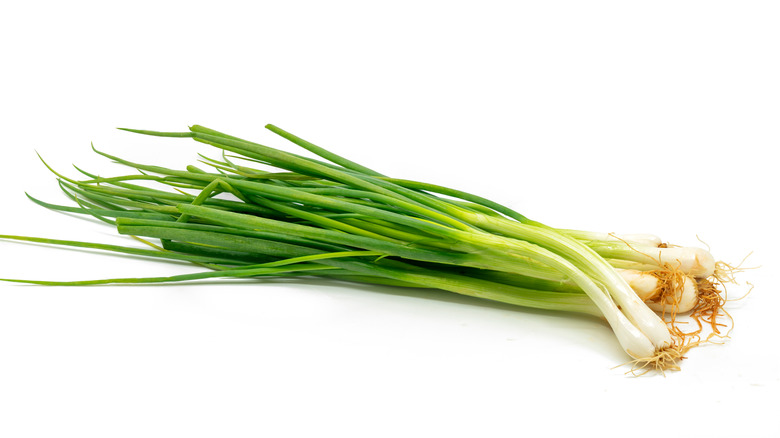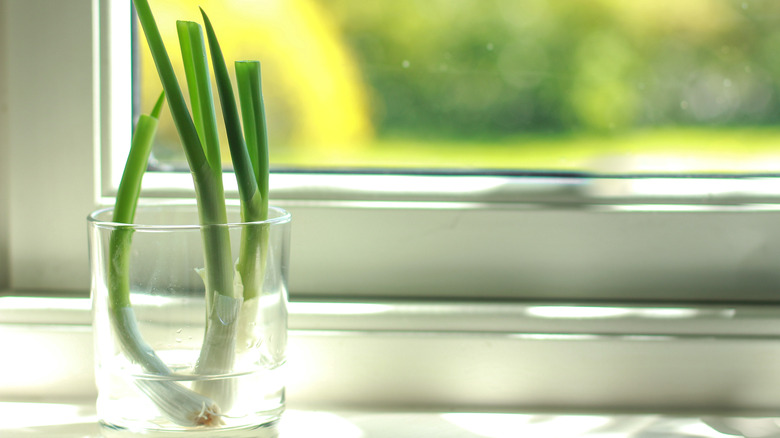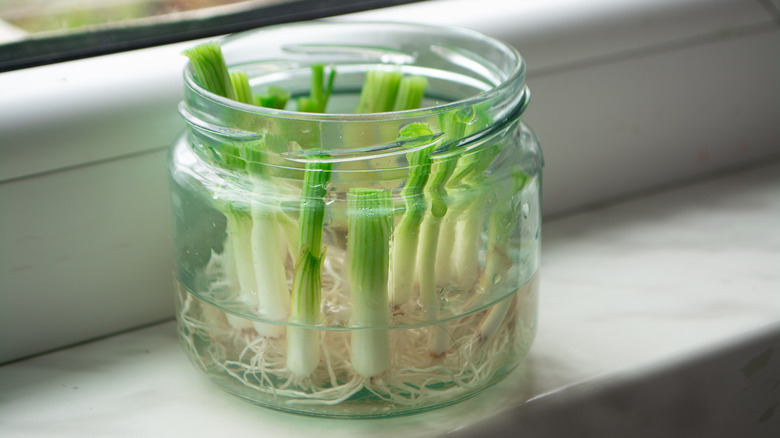The Storage Hack To (Literally) Get More Out Of Scallions
Of all the trends born from the pandemic, nothing was more intriguing than collectively dedicating to preserving produce longer. As grocery store trips became a daunting practice for many due to COVID-19 exposure, along with scarcity due to supply chain issues, food storage hacks emerged across the internet. There's no limit to creative ways to store your favorite ingredients for a longer shelf life. Of all the hacks, one of the easiest and most rewarding has to do with scallions.
It is almost impossible to resist picking up a fresh bundle of scallions from the supermarket. Yet, one change to your scallion storage routine will allow for an abundance of it to grow in your home without a need to buy another bundle for a while. Taking a page from a time-honored kitchen practice born from resourcefulness, instead of throwing away the ends of scallions, consider saving them for an easy and rewarding storage technique that requires nothing more than what's already in your kitchen.
Regrowing scallions at home
What could be perceived as food waste is anything but. While you might be tempted to toss the hairy ends of the scallion in the trash, the key to regrowing more lies in the remaining roots of the allium. These roots are able to help the plant absorb water and nutrients, and subsequently are able to help with regrowth. For scallions, this means that by simply introducing the ends to a source of water, you're giving it what it needs to regenerate. Yes, it's that easy.
Coined a source of joy for New York Times writer Jenna Wortham, the practice of regrowing scallions was adopted by many during the pandemic, inspired by an abundance of time at home and the growing curiosity about growing food in a limited space. If you don't have a green thumb or frown at the dead plants around you, you can at least revel in the idea that you're capable of growing something by following this easy, low-effort storage routine.
How to regrow scallions
Storing and regrowing scallions at home begins with a mason jar, or any tall, shallow, and transparent vessel. After you've made something delicious like cheddar scallion buttermilk biscuits or turkey meatball and scallion yakitori, Bon Appétit recommends taking the remaining end bits and placing them root-side down in a glass or jar that's small enough to keep them from falling over and clear enough to maximize sunlight exposure. Add enough water to cover the roots, place them in a sunny area, and enjoy watching them grow.
Keeping scallions alive and growing may be as simple as giving them sunlight and changing the water, but still requires attention, consistency, and care. As you observe the growth of the scallion, watch out for any signs of cloudy water or a change from a green to yellow shoot. Homes & Gardens recommends replacing the water as it discolors to keep it fresh. For long-term growth, transfer the scallions into a pot of soil when the shoots reach around five inches long for a seemingly never-ending supply of scallion.


